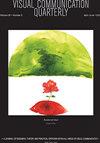Representations of Obesity and COVID-19 in Leading Stock Photography Websites
IF 0.4
Q4 COMMUNICATION
引用次数: 0
Abstract
AbstractEmerging research on the news representation of obesity and Covid-19 has found that obese individuals are overwhelmingly presented in stigmatising ways in news article texts, but the visual representation of obesity and Covid-19 has been understudied – even in the increasingly ubiquitous in the news stock photographs. This study analysed the representation of obesity and Covid-19 in 111 editorial stock photographs from Adobe Stock, Getty Images and Shutterstock using visual content analysis and semantic field analysis. In contrast to past research which has found well over 65% of the analysed photographs to be stigmatising, only slightly over half of the analysed editorial stock photographs were stigmatising. Potentially destigmatising associations of obesity with attractive appearance and positive emotions were also present.DisclaimerAs a service to authors and researchers we are providing this version of an accepted manuscript (AM). Copyediting, typesetting, and review of the resulting proofs will be undertaken on this manuscript before final publication of the Version of Record (VoR). During production and pre-press, errors may be discovered which could affect the content, and all legal disclaimers that apply to the journal relate to these versions also. Additional informationNotes on contributorsDimitrinka AtanasovaDr Dimitrinka Atanasova is a Lecturer at the Department of Linguistics and English Language, Lancaster University, drawing on theories and methods from applied linguistics, media & communication studies, and sociology. She researches health and science communication and developments in news journalism (currently, constructive journalism) and is a Founding Member of the British Association for Applied Linguistics Special Interest Group on Health & Science Communication. She has previously worked as a Media Consultant and held research positions at Queen Mary, University of London (School of Languages, Linguistics & Film), University of Sheffield (Information School) and University of Leicester (School of Media, Communication & Sociology). She continues to do occasional media consultancy work for private, public and third sector clients. E-mail: d.atanasova@lancaster.ac.uk肥胖和COVID-19在主流图片网站上的表现
关于肥胖和Covid-19新闻表现的最新研究发现,新闻文章文本中绝大多数都以污名化的方式呈现肥胖个体,但肥胖和Covid-19的视觉表现尚未得到充分研究,即使在新闻库存照片中也越来越普遍。本研究使用视觉内容分析和语义场分析,分析了来自Adobe stock、Getty Images和Shutterstock的111张编辑库存照片中肥胖和Covid-19的代表性。过去的研究发现,超过65%的被分析照片具有侮辱性,相比之下,只有略高于一半的被分析的编辑库存照片具有侮辱性。肥胖与迷人的外表和积极的情绪之间潜在的去污名化的联系也存在。免责声明作为对作者和研究人员的服务,我们提供了这个版本的已接受的手稿(AM)。在最终出版版本记录(VoR)之前,将对该手稿进行编辑、排版和审查。在制作和印前,可能会发现可能影响内容的错误,所有适用于期刊的法律免责声明也与这些版本有关。Dimitrinka Atanasova是兰开斯特大学语言学和英语语言系的讲师,主要研究应用语言学、媒体与传播研究和社会学的理论和方法。她研究健康和科学传播以及新闻新闻业的发展(目前为建设性新闻),是英国应用语言学协会健康与科学传播特别兴趣小组的创始成员。她曾在伦敦大学玛丽皇后学院(语言、语言学与电影学院)、谢菲尔德大学(信息学院)和莱斯特大学(媒体、传播与社会学学院)担任媒体顾问和研究职位。她继续偶尔为私人、公共和第三部门客户做媒体咨询工作。电子邮件:d.atanasova@lancaster.ac.uk
本文章由计算机程序翻译,如有差异,请以英文原文为准。
求助全文
约1分钟内获得全文
求助全文

 求助内容:
求助内容: 应助结果提醒方式:
应助结果提醒方式:


